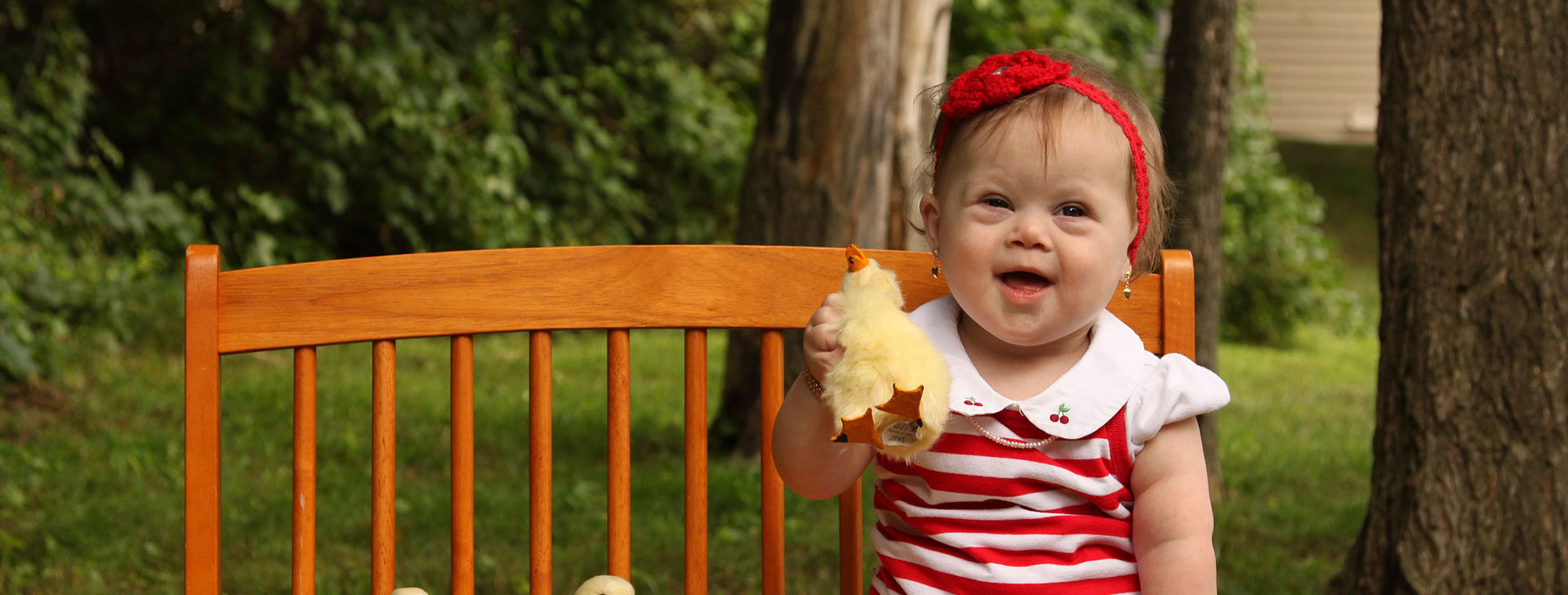Down Syndrome: An Important Pediatric Podiatry Issue
Arianna Sabghir, DPM
The foot of a child with Down syndrome is unique and special, and therefore, cannot be ignored. It is one of the most important parts of the body. While this may be true of any person, it is especially significant in a child with Down syndrome.
Podiatrists take care of painful conditions in children such as ingrown toenails and warts, but pediatric Podiatrists are also intricately involved in the preventative care of children with Down syndrome. Our goal is to prevent damage to the joints of the foot, ankle, knee and hip. Damage to these areas can occur if left without proper support.
It is important to understand how the foot normally functions in order to understand how the foot of a child with Down syndrome is different. A normal foot functions between pronation (flattening of the arch), and supination (raising the arch) during gait. When the foot is supinated, it is rigid and stiff, as when the heel first hits the ground and when the foot is about to toe-off and propel the body forward. When the foot pronates, it becomes flexible and moldable to adapt to the variable ground surface. Problems arise when the foot either pronates or supinates at times during stance and the gait cycle, when it should not.
Most persons with Down syndrome, (specifically 88% of the population) experience very loose joints and are very flexible and therefore non-supportive. These conditions are called ligamentous laxity and hypermobility, which contribute to excessive pronation. That, along with the low muscle tone, is the precise cause of the majority of issues in the Down syndrome foot. When more complex medical issues take precedent, feet are neglected, although they must also be addressed.
The most obvious foot issue occurs when the pronation/flattening does not resolve on its own unlike other young children. If left unsupported, the foot will go on to cause irreversible destruction to the entire lower extremity. As this occurs, the ability to maintain core strength, coordination and overall strength is compromised. Ultimately, this means while your child is working so hard to master goals in Physical Therapy, their own feet are working against them. The child with Down syndrome cannot keep up with peers if they lack the necessary tools to do so—tools they can be given!
Orthotics play a life-long role in the Down syndrome foot. The orthotic will improve coordination, balance, pain, posture, strength and result in more stable and functional walking. Most children with Down syndrome can use an orthotic that fits and is hidden inside the shoe itself. Some feet require the additional support of an SMO (Supramalleolar Orthotic), a brace that extends just above the ankle joint, or AFO (Ankle Foot Orthotic) brace which extends up the back of the leg. It is important that the foot is not over-braced so joints are not restricted.
Physical therapy should be started early for children with Down syndrome and continue well into adulthood to continue building proper muscle memory and strength.
When a child with Down syndrome sees a Podiatrist, it should be someone comfortable treating children, and experienced with treating one with special needs. As a mother of a child with Down syndrome, and a doctor of podiatric medicine, I know how challenging that can be! The child with Down syndrome should have the feet, knees, hips evaluated, especially as they walk.
Most children born with Down syndrome have a characteristic space between the first and second toes—the sandal gap. This makes the forefoot wider than a typical foot. A foot with significantly loose and hypermobile joints and ligaments and a space between the toes, presents with a very wide foot. This is one of the factors making shoe-fitting a challenge.
The Down syndrome foot not only has a very wide forefoot, but it also has a very narrow heel.
Important shoe features include a supportive sole that is not too flexible (a shoe should only bend at the toes), have a removable lining, and lace-up. A wide or extra-wide is crucial to avoid blistering and irritation on the foot. Many shoes that fit these criteria, are New Balance, Falcotto and Naturino, Billy, and Stride-Rite (to name a few).
At the end of the day, it is important that Podiatry is among your child’s regular specialists, in addition to the Cardiologist, ENT, Dentist, Gastroenterologist, and Oncologist. The foot has the potential to “silently” cause life-altering damage.
We all want our children with Down syndrome to reach their maximum potential, so don’t forget about one of the most important parts of them!
Arianna Sabghir, DPM is a Podiatrist who specializes in pediatric podiatry and biomechanics. She has her own private practice on the Upper West Side in Manhattan. She is also a Clinical Director for the Special Olympics. Dr. Sabghir is a mom to a precious 4-year-old boy with Down syndrome.

